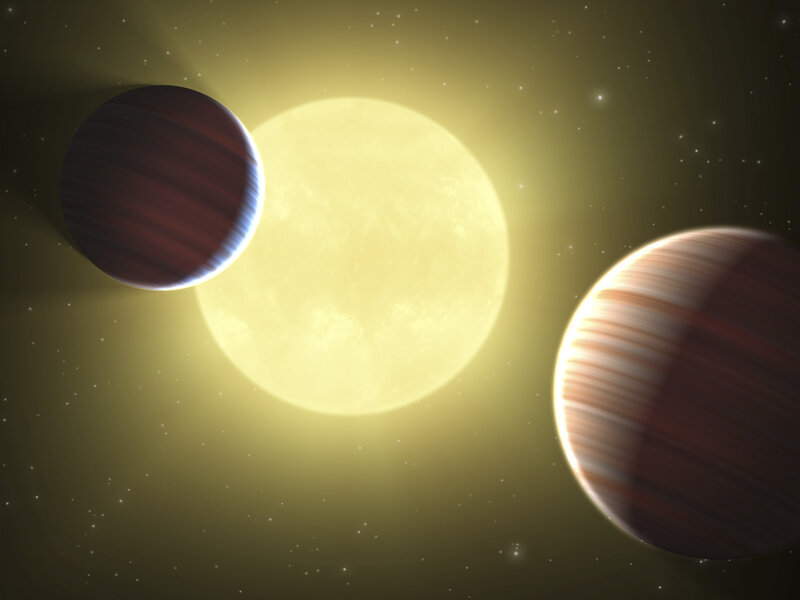Kepler find: scorching 'super Earth' could be smallest known exoplanet
Loading...
Is it time to add one more planet to the Kepler mission's tally of extrasolar planets?
When the Kepler team announced Thursday the discovery of a multiplanet system orbiting a star identified as Kepler 9 some 2,283 light-years from Earth, it was confident about two planets, but coy about a third.
Thursday night, however, the team released a new analysis of the data regarding the third, using a unique model they've dubbed BLENDER. The conclusion: The odds are excellent that the object is a planet some 1.5 times larger than Earth – and so close to its star that one orbit around the sun-like furnace takes 1.6 Earth days.
In our solar system, the closest planet to the sun is Mercury, which orbits every 88 days at a distance that ranges from 29 million to 43 million miles.
If the BLENDER analysis holds up, the planet – for now known as KOI-377.03 – will be the smallest yet found. Moreover, the methodologies used in BLENDER appear to be a promising way for Kepler planet-hunters to confirm more "super Earths" elsewhere in their survey.
Confident it's a super Earth
There remains some uncertainty in the object's nature, acknowledges Guillermo Torres, a researcher at the Harvard-Smithsonian Center for Astrophysics in Cambridge, Mass., and the leader of the effort to put the Kepler data through BLENDER.
But the probability that the detection was caused by something other than a planet is sufficiently small, he says, that he's confident it's a planet.
"We tried to be very conservative in our assumptions" about how many planets of this size orbiting at this distance from its host star occur, as well as about how often one might find the kinds of objects that would yield "false positives" matching the signature Kepler detected.
Kepler detects planet candidates by tracking subtle changes in the light coming from each of more than 156,000 stars in a patch of sky near the constellation Cygnus. Kepler tracks these stars simultaneously. As an object passes in front of the star, the starlight dims for a period, then returns its original brightness.
*But the dimming can be caused by several factors other than a planet's passing. For instance, the star itself can dim and fade over short time scales. A companion could be a second, low-mass star or brown dwarf.
Or, from Kepler's perspective, a target star might appear to be right next to a binary star (though one is in fact light-years behind the other). The cumulative light of the target star and binary star together might be great enough to make the dimming of the binary star system, when it is in eclipse, less pronounced. When that happens, it could fool observers into thinking that a smaller, potentially planet-like object is eclipsing the target star.
BLENDER: just the right mix
That's where BLENDER comes in. "The idea of BLENDER was to play with a bunch of these combinations, as many as you can think of, and see how well those fit the observed light curve," Dr. Torres explains.
Indeed, for the duration of Kepler's 3-1/2-year mission, BLENDER may be the only tool to confirm so-called "super Earths" like the one the Kepler team is convinced it has found. The planet is too small and too close to it's host star to be confirmed through other techniques, such as those that rely on observing the effect gravity from an orbiting planet has on the spectrographic signature of its host star. The wobble the planet would impart would be too small to detect with current instruments and telescopes, the researchers say.
This new approach for analyzing planet candidates is one more example of Kepler's unexpected power in analyzing the planets it discovers.
"Kepler is turning out to be a fantastic machine for making statements we didn't think we'd be bale to make at the beginning" about the planets the orbiting telescope discovers.
To date, Kepler has discovered more than 700 planet "candidates," and has seven confirmed planets to its credit. Assuming confidence in KOI-377.03's status increases, make that eight.





